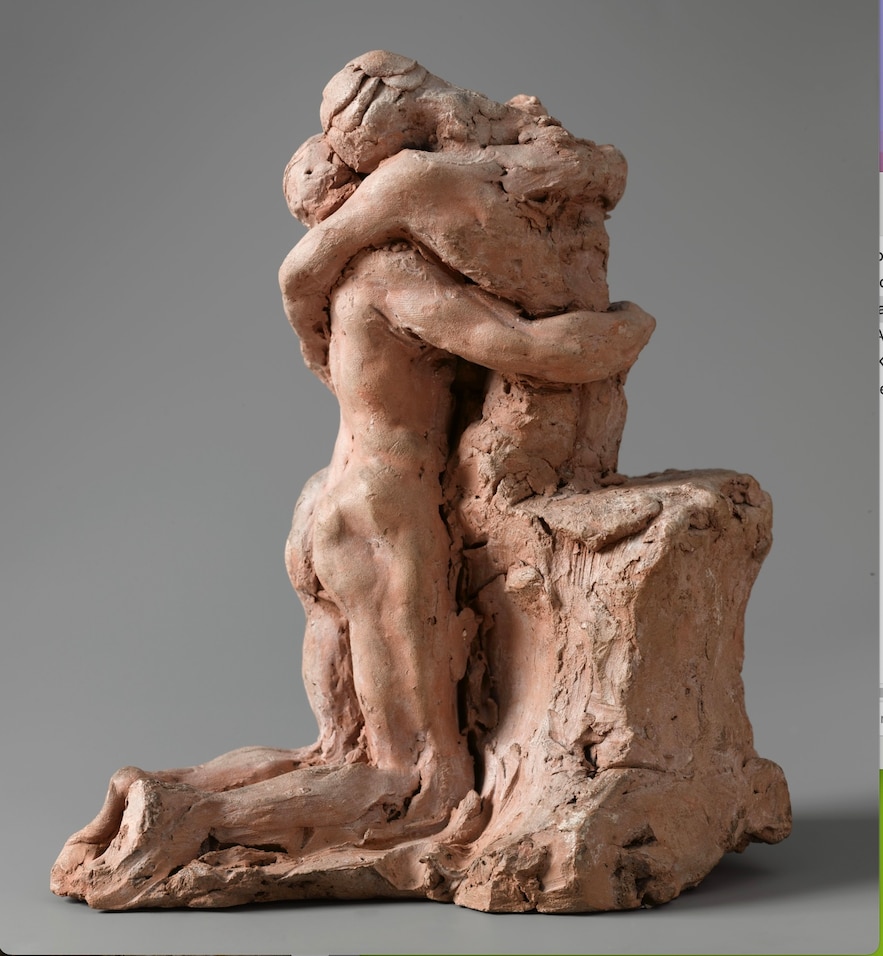In the spring of 1888, in the columns of ArtLéon Gauchez praises the plaster signed by an unknown woman which he considers “the most extraordinary work” presented at the Salon that year. The critic praises the “creative delicacies of Miss Camille Claudel”, praising “the exquisite movement of unconscious abandonment of the young beloved’s entire being”.
The sculptor doesn’t know it yet but Sakountalawhich made her known to the public, will remain the only creation rewarded at the Salon in her career which will soon be marred by drama. Alas, despite the honorable mention awarded by the artistic high mass of the capital, she did not obtain the State commission which would have allowed her to cut a monumental marble. In 1895, Camille Claudel donated the plaster to the Châteauroux museum, where the local bourgeoisie gave it a cold reception: too erotic.
To build her first ambitious group, the 21-year-old girl, Rodin’s little hand and lover in the year 1886, was inspired by an Indian legend transcribed by the Hindu poet Kalidasa between the 4th and 5th centuries. It represents the reunion of King Dushyanta and his wife Sakountala, whom a curse had separated for a long time. Rarely revisited by painting or statuary, the myth is then the subject of orientalist shows, whose overloaded exoticism contrasts with the sobriety of the “stripped and timeless” sculpture, underlines Cécile Bertran, the curator of the exhibition. that the Camille-Claudel museum in Nogent-sur-Marne (Aube) devotes to Sakountala until January 12. From its creation to its posthumous rehabilitation, including the controversies it aroused, the entire creative process of the work and its avatars is deciphered here.
By Camille Claudel, 1888, patinated plaster.
/ © Collections Bertrand museum of the City of Châteauroux
It was only in 1905, thanks to the patronage of the Countess de Maigret, that the artist was able to translate Sakountala in marble in a reduced version. If Vertumnus and Pomona takes up the composition of the original group, the crown of apples, the vine stocks and the draping refer to Roman mythology. A few months later, a new avatar, with a title reduced to the essentials, saw the light of day: bronze Abandonment edited by Eugène Blot, loyal supporter of the artist. The chronicler Louis Vauxcelles loses his Latin: “Our poor words cannot express the sacred emotion of this group. The defeated woman who gives in to the man’s lament of love, to the prayer rising towards her.” The following year, the State finally placed an order with Miss Claudel: it would be Wounded Niobidea Sakountala now alone. Like the other derivatives and in the image of their creator, interned for the last thirty years of her life, Niobide will fall into oblivion, before being resurrected in the 1980s.

Camille Claudel, “Study for Sakountala”, circa 1886.
/ © RMN Grand Palais (Orsay Museum) / Patrice Schmidt
Among the most moving remains exhibited in Nogent, of the Sakountala original there are also three small evolving terracotta sketches dated 1886. We follow the reflections of the young sculptor who varies, throughout her studies, the postures and the intensity of her models until determining their final position: a man kneeling in front of a young girl standing, feverishly embracing, forming a couple steeped in chaste desire. Everything is already there in this snapshot of clay imbued with the absolute fixed for eternity.
.
